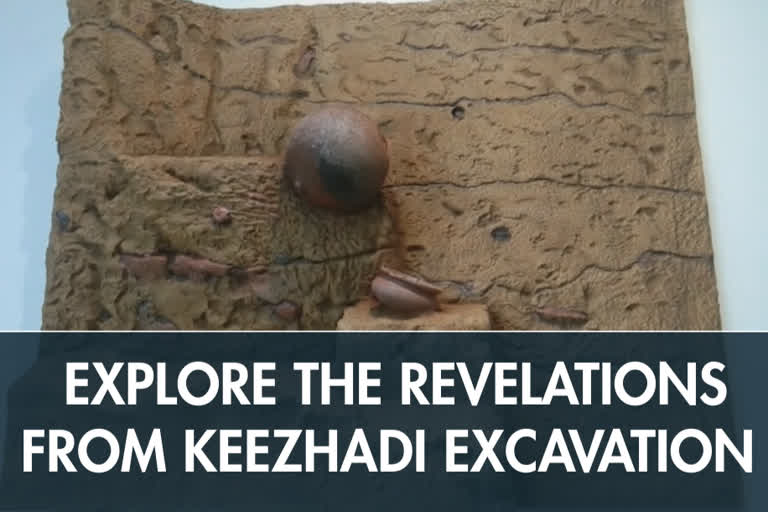Chennai:Tamil Nadu Archaeological Department has put on an exhibition in Madurai showcasing artifacts excavated at Keezhadi during the 4th and 5th phases, providing a rich haul of material and data about the past.
As an icing on the cake, the exhibition also consists of a virtual reality tour of the excavation site for the visitors. The next excavation at the spot is slated to begin by the end of January 2020. The Exhibition on Keezhadi, established on the first floor of Madurai Ulaga Tamil Sangam Building, houses over 7000 artifacts.
Oven, Perforated ware and ivory objects dating back to centuries Tamil Nadu Chief Minister, Edappadi K Palanisami inaugurated the exhibition on Friday through the video-conferencing method. The exhibition is open for visitors from 11 am to 7 pm. It is expected that around 1000 people will be visiting the exhibition in a day and 20 staffers from the archeology department are present in the exhibition to brief the visitors about the artifacts.
Terracotta Mould and Figurines Keezhadi, a small village in Sivaganga district near Madurai, came into the limelight, after the archeologists from Archeological Survey of India, unearthed a river-based civilization of Tamil Nadu that backs to the Sangam era between 300 BC to AD 300.
Gold jewellery excavated from Keezhadi After ASI winded up the excavation with three phases, Tamil Nadu Archaeological Department, based on popular demand, continued the following phases. The Keezhadi cultural deposit could be dated between the 6th century BCE and the 1st century CE.
Pots and faces made of clay According to noted archaeologist K. Rajan, the recent findings at Keezhadi answers to several hypotheses were held to date. Earlier, the date of Tamil (Tamil-Brahmi) was considered as 5th Century BCE. This was based on radiometric dates recovered from Kodumanal, Alangulam and Porunthal excavations.
Structural marvel discovered following Keezhadi excavations "But the recent scientific dates obtained from Keezhadi findings push it back to another century -- 6th Century BCE," the state government said. Based on samples it could be said that people have been living in Tamil Nadu for 15 lakh years.
Replica of exhibition site The Keezhadi excavation ascertains that the people of the 6th century BCE had attained literacy or learned the art of writing Tamil-Brahmi that was evident from several potherds that were found.
Similarly, the earlier hypothesis was the second urbanisation didn't happen in TN after the early historic phase that began in the 3rd century BCE. But the excavations at Keezhadi of brick structures suggest the second urbanisation did happen in the state in 6th century BCE as in the Gangetic plains.
During the five seasons of excavations, over 14,540 samples were taken out.
Read: ASI to replace damaged stones of Taj Mahal's Chameli floor
